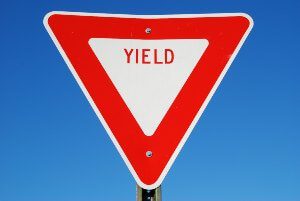 Right-of-way laws are in place to ensure the smooth flow of traffic and to prioritize safety for all who share the road. A right-of-way violation can result in a dangerous accident, so it is important to know what the laws are before getting behind the wheel.
Right-of-way laws are in place to ensure the smooth flow of traffic and to prioritize safety for all who share the road. A right-of-way violation can result in a dangerous accident, so it is important to know what the laws are before getting behind the wheel.
Below, we discuss Wisconsin right-of-way laws for different locations, including intersections and highway ramps. We also discuss the rights of cyclists and pedestrians.
If you were injured by a driver who violated your right of way, you may be able to recover compensation for your damages. Call our Green Bay car accident lawyers today to learn more about your legal options.
Who Has the Right of Way at an Intersection in Wisconsin?
Intersections are where conflicts between different streams of traffic occur. The right of way is dictated by the mechanisms used to control the flow of traffic – traffic lights or stop signs.
There are varying types of intersections, all with corresponding right-of-way rules.
Controlled Intersections
At intersections controlled by traffic signals, drivers must obey the traffic lights:
- When the light is green, drivers have the right of way while others with a red light must yield.
- When approaching a yellow light, drivers are required to slow down and prepare to stop to yield the right of way.
When turning at a controlled intersection, the right of way depends on whether the driver is making a left, right or U-turn.
- Drivers making a left turn only have the right of way if there is a green turning arrow.
- If there is no green arrow, but the main light is green, then the driver making the left turn must yield to any oncoming traffic.
- While attempting a right turn at an intersection, drivers have the right-of-way if the light is green.
- If the light is red, drivers must yield to oncoming traffic, but may make the turn if the way is clear.
It is important to note that drivers making any kind of turn must stay in the same lane from which they turned.
Uncontrolled Intersections
An uncontrolled intersection is one where there is no traffic signal, but there is a stop sign. This could be a four-way or two-way stop sign.
At a four-way stop, all drivers are required to come to a full stop before proceeding. The first driver to approach the stop sign has the right of way. If more than one car approaches the stop sign at the same time, then the driver to the right has the right of way and may proceed.
At a two-way stop sign, traffic on the perpendicular lanes has the right of way. The driver who approaches the stop sign must come to a full stop and yield the right of way until the way is clear.
Three-Way Intersections
Three-way intersections, also known as T-intersections, require drivers approaching from the terminating road to yield to vehicles on the through road. The through road traffic generally has the right of way unless otherwise indicated by traffic signs or signals.
Roundabouts
Roundabouts are becoming more common in Wisconsin as an alternative to traditional intersections.
When entering a roundabout, drivers must yield to vehicles already in the roundabout. Drivers should follow the appropriate lane markings and use their turn signals when exiting the roundabout.
Who Has the Right of Way on a Highway Ramp?
Vehicles on the highway have the right of way. Drivers attempting to enter the highway must yield the right of way and can only merge when there is enough space between oncoming traffic.
If the on-ramp has more than one lane, then drivers in the lanes that end must also yield the right of way to those in the through lanes that lead onto the highway.
Do Emergency Vehicles Always Have the Right of Way in Wisconsin?
In most situations, an emergency vehicle with flashing lights and sirens blaring does have the right of way, even if that vehicle is crossing through an intersection with a red light or stop sign. Drivers in the emergency vehicle should give plenty of warning to surrounding drivers while approaching a red light by blowing the horn.
Drivers should not only yield to emergency vehicles, but Wisconsin law also requires drivers to move over a lane if there is one parked on the shoulder. If moving over a lane is not possible due to traffic limitations, drivers are required to reduce their speed by half the posted limit.
Do Cyclists or Pedestrians Always Have the Right of Way in Wisconsin?
Cyclists and pedestrians are vulnerable road users who require special consideration. While they are afforded certain rights and protections, it is important to note that they must also adhere to traffic laws.
Cyclists in Wisconsin must follow the same traffic laws as drivers, including yielding the right of way when necessary. However, drivers must still exercise caution and provide enough space when sharing the road with cyclists.
Pedestrians usually have the right of way at an intersection except when a traffic light is red. If a driver is turning on a green light, but there is a pedestrian in the crosswalk, the driver is usually required to yield. However, this could vary depending on the intersection.
Did Someone Violate Your Right of Way? Call Us Today
Wisconsin right-of-way laws play an important role in maintaining road safety and minimizing accidents. If another driver failed to yield and caused an accident, you may be able to pursue compensation for your damages.
We offer a free consultation and there are no upfront fees for our services.
Call (877) 888-5201 today to learn more.